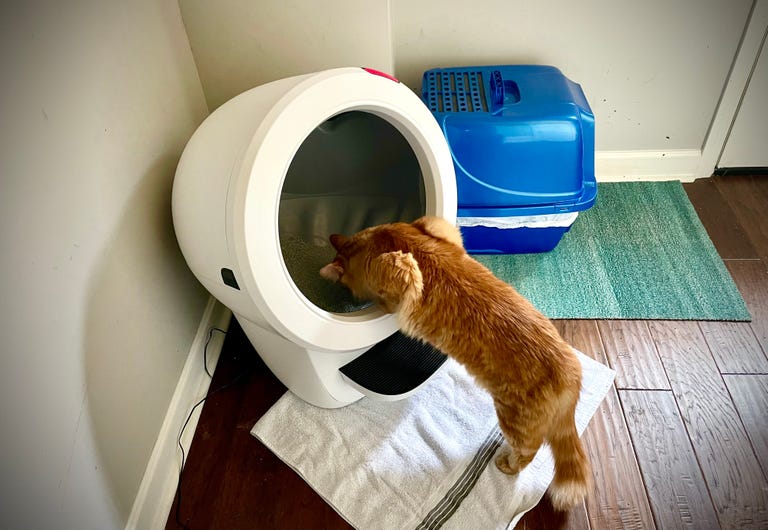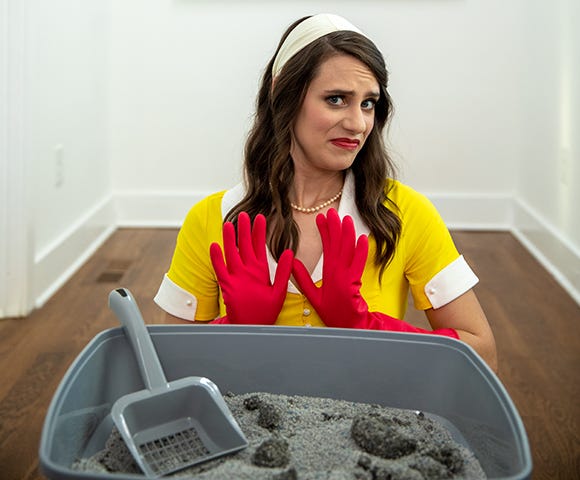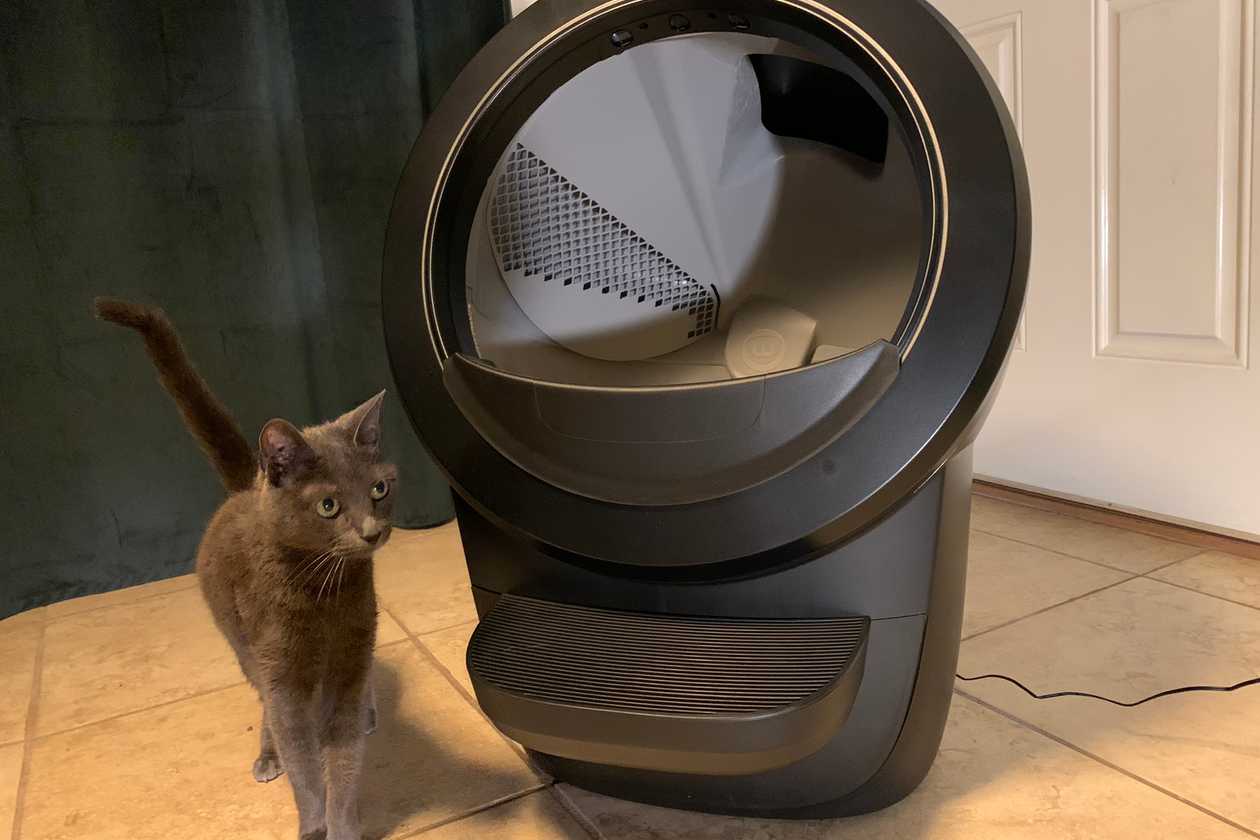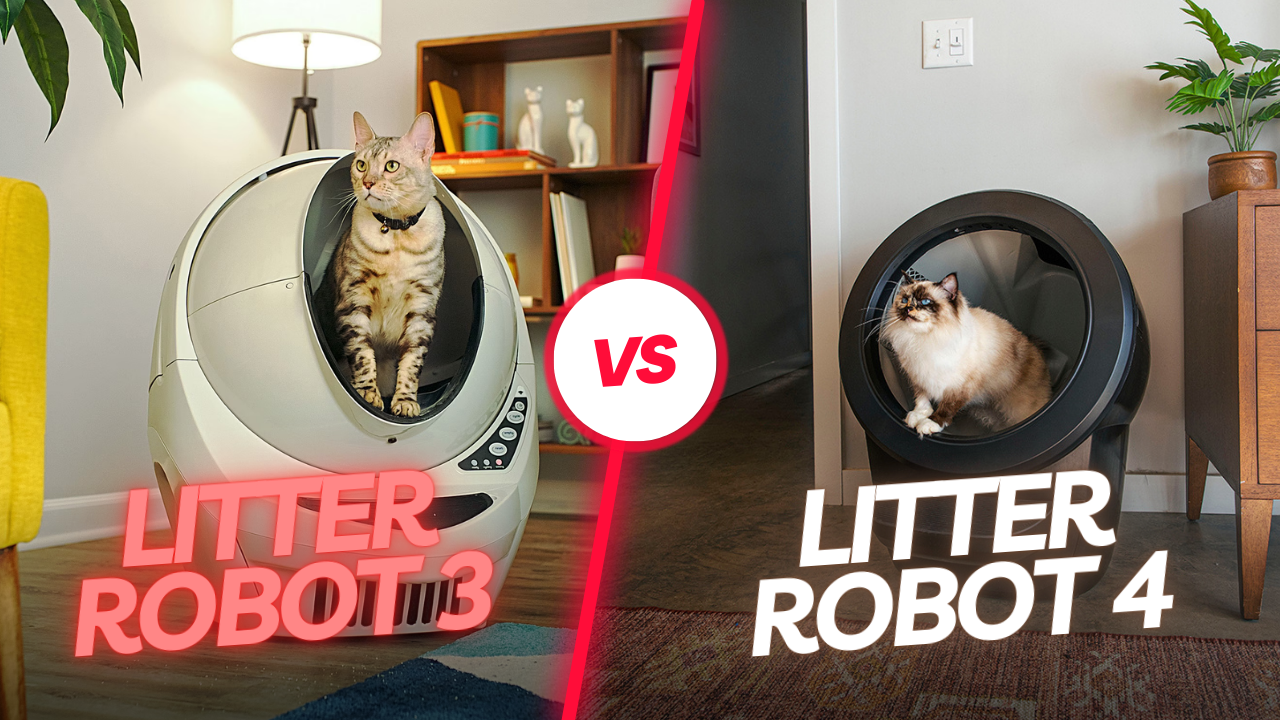To acclimate your cat to a Litter Robot, introduce it gradually and keep the old litter box nearby. Reward your cat for exploring or using the new device to encourage positive associations.
Cats are creatures of habit, and introducing a new element like the Litter Robot into their routine can sometimes be met with hesitation. A methodical approach is essential for seamless integration into your cat’s life. Begin by placing the robot next to the familiar litter box without removing the old one.
This allows the cat to explore the new machine on its terms. Entice your feline friend with treats and affection each time it approaches or uses the Litter Robot. Maintaining a familiar scent is crucial; sprinkle some used litter from the old box into the new one to help your cat feel at ease. Ensure the Litter Robot is always clean and functional to make the transition as smooth as possible for your pet. Remember, patience and consistency are key when helping your cat adapt to this innovative technology.
Introduction To Litter Robot For Cats
Are you introducing a Litter Robot to your furry friend? This innovative gadget promises to revolutionize the way we handle cat waste. Cats are creatures of comfort, and the Litter Robot is designed to align with their natural instincts while offering convenience to cat owners. Let’s explore this smart solution and ensure a smooth transition for your beloved pet.
Why Choose A Litter Robot
Cleanliness and convenience stand at the forefront of the Litter Robot’s benefits. It automatically sifts waste, leaving a fresh bed of litter for your cat. Gone are the days of daily scooping, as this smart device makes maintenance a breeze. Additionally, it helps reduce odor and is ideal for busy pet parents who want to ensure their cats always have a clean place to go.
- Hands-free waste management
- Minimized odors
- Constantly clean litter
Potential Challenges In Switching To An Automated System
| Challenge | Solution |
|---|---|
| Behavioral Resistance | Gradual introduction |
| Unfamiliar Noises | Desensitization training |
| Mechanical Errors | Regular checks and maintenance |
Switching to a Litter Robot might come with challenges. Cats may initially show hesitance towards new objects. The unfamiliar motion and noise from the robot could startle them. To help your cat adjust, introducing the Litter Robot slowly and with patience is key. Check the system regularly to avoid mechanical interruptions that could discourage your cat from using it.

Credit: m.facebook.com
Prepping Your Cat For Change
Prepping Your Cat for Change might seem daunting, but cats are adaptable creatures. With the right approach, your feline friend can easily transition to using a Litter Robot. Let’s delve into how to adjust your cat’s routine and create a comfortable environment for this shift.
Understanding Your Cat’s Habits
Cats thrive on routine and familiarity. Take note of your cat’s current litter habits. What times do they usually go? How do they cover their waste? Knowing these patterns helps tailor the transition to the Litter Robot.
- Meal times often dictate litter usage. Monitor these intervals.
- Favorite spots in the current box might indicate where to place the Litter Robot.
- Patience is key. Don’t rush the process. Give your cat time to observe and explore new changes.
Creating A Stress-free Environment
Cats detest stress, especially when it involves their private time. Ensure the transition is as smooth as can be.
- Place the Litter Robot in a quiet, low-traffic area.
- Keep the old litter box nearby initially, gradually moving it closer to the Litter Robot.
- Use familiar scents to make the new device less intimidating.
- Allow for casual exploration. Let your cat sniff and inspect without pressure.
Introducing The Litter Robot
Welcome to “Introducing the Litter Robot,” a guide crafted for cat owners embracing modern solutions for pet care. The Litter Robot promises a cleaner, more hygienic life for you and your furry friend. But first, you must ensure your cat feels comfortable with its new companion.
First Impressions Matter
Setting the stage is crucial for a smooth transition. Begin by positioning the Litter Robot in a quiet area your cat frequents. Keep the old litter box nearby but slowly reduce its appeal by removing its cleanliness. This subtle shift encourages exploration of the new device without stress.
Step-by-step Introduction Process
Make this transition as gentle as possible with these steps.
- Initial Setup: Assemble the Litter Robot according to the manual, ensuring it is stable and ready for use.
- Familiar Scent: Place a scoop of used litter from the old box into the Litter Robot to add a familiar scent.
- Guide Curiosity: Let your cat observe the Litter Robot. Encourage inspection with treats and positive reinforcement.
- No Pressure: Allow your cat to approach the Litter Robot on its own terms. Never force usage, as this can lead to negative associations.
- Patience is Key: It may take several days or longer for full adaptation. Monitor progress and remain patient and supportive.
- Gradual Transition: Slowly phase out the old litter box as your cat begins to use the Litter Robot consistently.
With this guide, your cat should adapt smoothly to its Litter Robot, and you’ll enjoy a tidier environment. Remember, patience and gentle encouragement are your best tools.

Credit: www.cnet.com
Transition Techniques
Introducing a new gadget like the Litter Robot can be a puzzle for both owner and cat. Cats love routine and the familiar comfort of their traditional litter box. Transition techniques are key to a smooth switch.
Simultaneous Litter Box Setup
Begin with both the old litter box and the new Litter Robot accessible to your cat. Place them side by side.
- Use the same litter in both boxes.
- Do not force your cat to choose the Litter Robot right away.
- Observe their behavior and patience is key.
Gradual Increase Of Litter Robot Usage
Once your cat seems curious about the new robot, encourage gentle exploration.
- Place treats near the Litter Robot to create positive associations.
- Gradually move the old box away, increasing the Litter Robot’s appeal.
- Monitor the progress and be ready to help if your cat is confused.
Troubleshooting Common Issues
Troubleshooting Common Issues can feel daunting as every cat interacts with new gadgets in their own unique way. The Litter-Robot may seem like a spaceship to your furry friend, but don’t worry. Work through these troubleshooting tips and watch your cat become an astronaut in their new bathroom space station.
Dealing With Hesitation Or Fear
It’s not uncommon for cats to approach new objects with a bit of hesitation or even outright fear. The following strategies can help your cat overcome their initial fear of the Litter-Robot:
- Introduce gradually: Place the Litter-Robot next to your cat’s current litter box without turning it on.
- Use familiar scents: Sprinkle some of the used litter from the old box into the new one.
- Positive associations: Offer treats and praise when your cat investigates the Litter-Robot.
- Patience pays off: Give your cat a few days to get accustomed at their own pace.
Adjusting Settings For Your Cat’s Comfort
The Litter-Robot comes with several settings to customize the experience for your kitty’s comfort. Consider these tweaks:
- Wait time: Adjust the automatic cleaning cycle delay to give your cat enough time to leave comfortably.
- Sensor checks: Ensure the sensors are working properly to detect when your cat has exited the unit.
- Manual mode: Start with the manual mode so your cat isn’t startled by the automatic cleaning.
- Noise reduction: Place the unit on a carpet or mat to reduce noise during operation.
By addressing your cat’s hesitation and optimizing the Litter-Robot’s settings, you’ll create a stress-free transition to this new way of maintaining their personal hygiene.
Maintaining The Litter Robot
Maintaining the Litter Robot is crucial for both your cat’s satisfaction and the longevity of the unit. Your feline friend needs a clean space to do their business, and the Litter Robot offers an innovative solution. Yet, even the smartest devices require attention to keep them running smoothly. Knowing when to clean and how to address issues can make all the difference. Let’s dive into the routines and fixes that will keep your automated litter box in top-notch condition.
Regular Cleaning Routines
To ensure the Litter Robot remains a hygienic haven for your cat, establish a regular cleaning schedule. Consistent care averts odors and malfunctions.
- Empty the waste drawer when indicated or at least once a week.
- Wipe the inside globe with a damp cloth to remove litter clumps.
- Inspect and clean sensors and charging ports monthly to prevent glitches.
- Replace carbon filters and liners as recommended by the manufacturer.
Frequent upkeep keeps the Litter Robot inviting for your cat and hassle-free for you.
Troubleshooting The Litter Robot
If the Litter Robot acts up, don’t panic. Simple steps can resolve most issues. Here’s a go-to checklist:
- Check the power supply and ensure the unit is plugged in correctly.
- Reset the device by turning it off and on if sensors are unresponsive.
- Look at the manual for specific error codes and follow guided solutions.
- Contact customer support if problems continue beyond basic fixes.
A calm approach to troubleshooting can save you time and keep your Litter Robot functional.

Credit: www.litter-robot.com
Frequently Asked Questions On How To Acclimate Cat To Litter Robot
How Do You Introduce A Cat To A Litter Robot?
Introducing a cat to a Litter Robot requires patience. Begin by placing the new unit near the old litter box without turning it on. Let your cat inspect it at their own pace, and gradually move litter from the old box to the Litter Robot to transfer scents.
Can Cats Be Afraid Of Automatic Litter Boxes?
Yes, cats can initially be afraid of automatic litter boxes due to unfamiliar movements and sounds. To mitigate fear, acclimate your cat by running the Litter Robot manually for a few days. Provide treats and praise to associate positive experiences with the new device.
What Are The Benefits Of Using A Litter Robot For Cats?
Litter Robots offer hygienic waste management with less odor and reduced litter tracking. They keep the litter area clean, requiring less frequent maintenance, which is beneficial for busy pet owners. Automatic cleaning can also help with multiple-cat households by promptly removing waste.
How Often Should I Clean My Litter Robot?
Cleaning frequency for a Litter Robot varies depending on the number of cats using it. Generally, empty the waste drawer once a week for one cat, adjusting as needed for more. Regularly wipe down the globe and base to maintain hygiene and comfort for your cat.
Conclusion
Transitioning your cat to a Litter Robot doesn’t have to be a struggle. With patience and the right approach, you’ll soon marvel at the ease of cleaning. Remember to introduce it slowly, keep the old litter box handy, and be reassuring.
Before long, both you and your feline friend will appreciate the convenience and hygiene benefits that this modern solution offers. Embrace this change for a happier, cleaner home.



